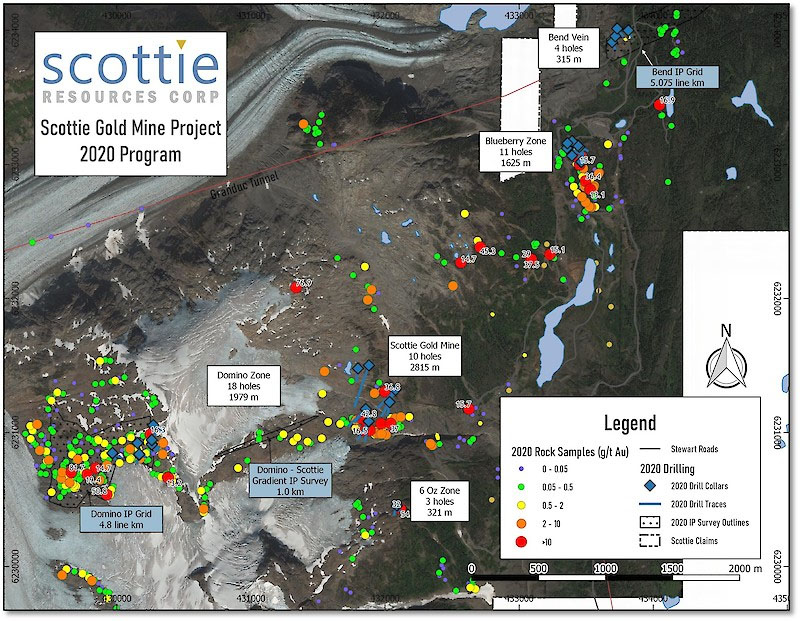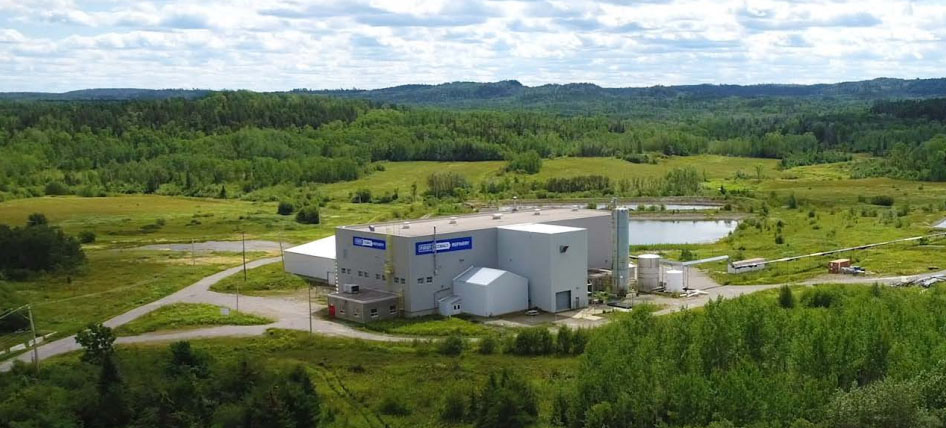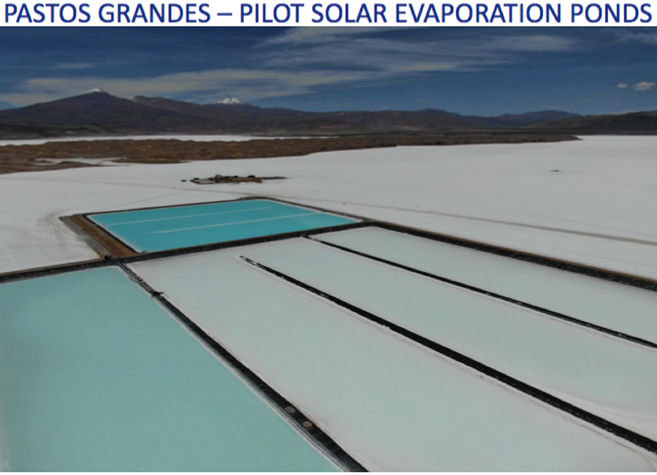The Energy Report: During your last interview, you discussed the "tight" lithium supply-demand equation. Considering that a number of new projects are in the works, is there going to be a supply surplus in the next few years?
Mansur Khan: It depends largely on how successfully these projects come on-line, how disciplined producers are in introducing new supply (for example, not flooding markets), how they each position themselves within the lithium value chain and how strategically buyers source supply and promote a diversity of producers, jurisdictions and mining methods.
As we have seen, Galaxy Resources Ltd. (GXY:ASX, Not Rated) has had commissioning challenges over the past year and FMC Lithium Corp. (FMC:NYSE, Not Rated) is having its own expansion issues. So supply isn't always as easily and smoothly expanded as seems theoretically possible.
Naturally, demand growth would also play a key role in determining the pace at which new supply can be brought on-line. Keep in mind that industry estimates currently forecast a doubling or tripling of lithium demand by 2020, depending on the market share of electric vehicles (EVs) and the mix of hybrid vs. full EVs. If EVs gain a large share of the market, we may very well go from worrying about oversupply to worrying about a shortage.
So it's a bit difficult to say exactly what the near-term picture will look like. However, given the increased production capacity, we do expect prices to stay relatively flat, if not face downward pressure in the coming year or two or until incremental demand increases start to soak up additional supply. We feel comfortable with our conservative long-term, battery-grade lithium carbonate price at ~$5,875 per tonne.
TER: You just wrote in a report that there will be a "myriad of lithium-based products in the years ahead." What are the potential profit implications for the companies you follow, and who stands to gain or lose?
MK: We've heard the umbrella term "lithium carbonate equivalent" (LCE) a lot over the years—in reality, lithium is not sold in a standard commoditized form but is converted to a range of lithium-based saleable products, often specific to various customer processes and applications. How this product and competitive landscape shapes up depends on a number of factors including cost advantages, technical expertise, product knowledge and customer relationships. In a recent presentation, Roskill, an international metals and minerals research firm, discussed the likelihood of major producers leveraging their strengths to focus increasingly on higher value-added and less crowded product niches (such as organolithium products), potentially leaving room for new entrants to focus on less value-added lithium-based products requiring fewer conversion steps.
Among the companies that we follow, the three brine developers in Argentina that are focused on battery-grade lithium carbonate are likely to have a cost advantage over their hard-rock peers in this regard once they are up and running. The challenge here would be getting consistent production, given the country's susceptibility to weather conditions, as illustrated by FMC in recent years. Among the two hard-rock companies that we cover, Canada Lithium Corp. (CLQ:TSX; CLQMF:OTCQX, BUY, High Risk, Target CA$1) will be starting with battery-grade lithium carbonate followed by lithium hydroxide and potentially lithium metal down the road. Nemaska Lithium Inc. (NMX:TSX.V; NMKEF:OTCQX, BUY, Speculative Risk, Target CA$0.70), on the other hand, plans to start with lithium hydroxide as its primary product. Both of these companies are looking to capitalize on Quebec's low electricity costs in pursuing higher value-added products and believe they will have a cost advantage in the process.
TER: In a recent report, you suggested some qualifiers for independent consultancy signumBOX's pricing based on affiliate sales in Chile and varying grades. What prices for what grades should investors use in their calculations?
MK: Pricing on lithium products is not very transparent compared to various other commodities with developed spot and exchange-traded futures markets. In general, the going price on battery-grade lithium carbonate is expected to be upwards of $6,000 per tonne and the price for lithium hydroxide is expected to command a $1,000–1,500 per tonne premium to lithium carbonate. As mentioned before, we remain conservative and assume flat long-term pricing of up to $5,875 per tonne for battery-grade lithium carbonate in our models.
signumBOX recently started publishing pertinent export/import data for lithium products and we look forward to its updated Li-Stats report with more details by the end of March. As you pointed out, numerous qualifiers have to go along with this data to get a better sense of the price that most emerging lithium developers are concerned with. Otherwise, you can end up with prices ranging from ~$4,000–11,000 per tonne. For example, Rockwood Holdings Inc. (ROC:NYSE, Not Rated) and SQM (SQM:NYSE, Not Rated) are known to be the major suppliers to Japan and South Korea—the two countries whose import of lithium carbonate is almost exclusively battery-grade and therefore, a good proxy for pricing. However, according to signumBOX, Rockwood and SQM's Chilean export pricing of lithium carbonate is deceptively low at ~$5,000 per tonne as most of these refer to transfer pricing between affiliates and are therefore not necessarily reflective of international lithium prices.
TER: In a recent report, you said that consumers' uptake of electric vehicles is progressing slower than anticipated. What could this do to pricing estimates? How do the demand-growth projections for the auto market compare with other possible uses for lithium materials?
MK: In terms of how EVs stack up against other uses of lithium materials, the traditional applications such as glass, ceramics and lubricating greases have fairly low growth rates. The real drivers of growth are lithium-ion batteries, which are driven in turn by consumer portable applications, EVs and perhaps down the road by large, off-grid energy storage systems.
Given that EVs are expected to be the biggest driver of demand for lithium-ion batteries out to 2020, the timing of the mass adoption of electric-drive vehicles, both plug-in hybrid electric vehicles (PHEVs) and full EVs, can obviously have a meaningful influence on pricing. While the demand growth so far has been led by the use of lithium-ion batteries in consumer electronics and mobile applications (e.g. smart-phones, tablets and handheld power-tools), the EV theme nonetheless plays a critical role in long-term demand forecasts. If the pick-up in mass consumer demand of EVs was to get pushed out significantly, then current lithium demand forecasts would also get pushed back, leading to possible surplus capacity without the anticipated demand to offset it. In such a scenario, pricing could also suffer. Luckily, such a dire scenario is not expected—neither by industry observers nor by active participants.
While the pick-up in EVs may have fallen short of previous expectations, we do see signs of continuing growth, especially on the PHEV front, as auto manufacturers continue to roll out new models, including mid-sized vehicles. In the U.S., for example, according to the Electric Drive Transportation Association, electric-drive vehicle market share was ~3.4% in 2012 versus 2.2% in 2011. Various government and public-private partnership programs are piloting innovative means of deploying charging infrastructure. In our view, battery costs will also be a key factor in the general consumer's adoption of pure EVs, which require larger and more costly batteries and can suffer from diminishing returns in terms of gasoline displacement. PHEVs, on the other hand, require smaller batteries and can readily complement existing internal combustion engine vehicles without requiring a significant change in consumer purchasing decisions, in our view. Rockwood expects a tipping point for PHEV adoption later this year, with one for EVs around 2018.
TER: What are the implications for lithium producers after the Boeing Dreamliner battery problems?
MK: We think the Boeing situation is likely to intensify the debate within the industry on the safety and performance tradeoffs of various lithium-ion battery chemistries. For example, high-performance lithium-cobalt-oxide chemistry requires more design safeguards, given that it is arguably more volatile than its lithium-iron-manganese and lithium-iron-phosphate chemistry counterparts, which are safer but pack less "punch," so to speak. The average consumer may not be aware, nor care, that when we refer to lithium-ion batteries, we can be talking about half a dozen or more different battery chemistries, each one with tradeoffs across a variety of metrics including safety, cost and power. It is our view that this debate is likely to intensify going forward. Other than chemistry, battery design may also come under increased scrutiny.
In terms of the implications for actual lithium producers, unless these design and chemistry considerations pose a major hindrance to the development of batteries capable of cost-effectively supporting EVs, we think the demand curve will stay as is currently forecasted.
TER: Let's talk about some specific companies you follow. There's quite a bit of lithium development activity going on in Argentina, yet the country has taken on a somewhat risky reputation over the past year or so due to the YPF/Reposol drama. How is that affecting the lithium companies you follow there?
MK: The YPF/Reposol incident certainly added to Argentina's country risk, which can make financing decisions more challenging for potential investors. That said, Orocobre Ltd. (ORL:TSX; ORE:ASX, Buy, High Risk, Target CA$2.80) successfully completed its JV with Toyota Tsusho Group (TYHOF:OTCPK) as well as its low-cost debt financing last year, and is currently in construction. So it is moving along just fine with production expected in 2014.
Lithium Americas Corp. (LAC:TSX; LHMAF:OTCQX, Buy, High Risk, Target CA$2.60) is fully permitted and is currently discussing financing options with a number of parties. So the Argentine country risk hasn't completely driven away potential investors. We expect to hear an update from LAC on this front in the near future.
Rodinia Lithium Inc. (RM:TSX.V; RDNAF:OTCQX, Neutral, Speculative Risk, Target CA$0.50) has its flagship project in the province of Salta, which has a history of lithium mining and is home to FMC's Hombre Muerto lithium brine project. Given the challenging financing environment for early-stage developers, progress here has been slow as Rodinia's management is focused on preserving cash until there is a committed strategic party at the table, which is not imminent in our view. The recently announced credit facility will help fund a resource update and the feasibility study. However, we remain cautious on this story.
Taking a step back, the botched auction for lithium mining concessions in neighboring Chile may end up hurting Chile's ability to expand production, maintain market share and attract foreign investment. In a twisted way, this may ultimately help shift the balance over to Argentina and Canada as leading lithium-producing jurisdictions in the coming years.
TER: Nemaska Lithium is in Quebec and isn't facing these South American political questions, but now has some domestic politics of its own to deal with. How will that impact Nemaska?
MK: Last year, there was some consternation with Premier Pauline Marois about the Quebec government raising mining royalties. However, recent comments and efforts by the premier suggest a different stance with the promise of tax holidays and research and development support, which is reasonable, given that raising royalties could potentially hurt the province's top-15 ranking for global mining jurisdictions. Quebec's upcoming government mining forum on March 15 may shed some additional light on this issue.
It is also worth noting that the Quebec government has historically been supportive of the EV sector. In 2011, Premier Jean Charest launched the province's first action plan for electric vehicles. It's a plan designed to not just invest CA$250 million (CA$250M) in the deployment of electric vehicles in the province, but to effectively create a world-class EV industry by supporting lithium mining companies and research and development initiatives, and by forging strategic partnerships with leading auto and battery manufacturers from around the world. We believe Nemaska can play a key role in this Quebec initiative.
TER: Another Quebec-based company you follow is Canada Lithium Corp. It recently signed a three-year distributorship agreement with Marubeni Corp. (8002:Tokyo), one of Japan's largest commodities trading companies. What is the significance of that agreement?
MK: This is a significant agreement for a number of reasons. First, along with the Tewoo Metals International Trade Co. Ltd. (private) contract announced earlier, this contract helps to ensure that Canada Lithium can sell most of its production for the next three years or more. The deal also demonstrates Canada Lithium's ability to attract multiple offtake partners in a short span of time, but perhaps more important, that its product is of sufficiently high quality to attract a discerning buyer such as Marubeni. Historically, Japan has imported some of the highest-quality battery-grade lithium products for its leading battery industry.
TER: What is your top pick among the companies you follow?
MK: On a relative-value basis, we like Lithium Americas. Its lithium-brine reserves are indicated to support a 40-year mine life at 20,000 tons per annum (20,000 tpa) of low-cost lithium carbonate equivalent (LCE) production. The company's Cauchari project is adjacent to Orocobre's Olaroz project, which is fully financed and has construction underway. Orocobre trades at ~$23 of enterprise value per tonne of resource compared to Lithium Americas' ~$5 per tonne of resource by our estimates. Lithium Americas is currently in financing and JV discussions with a number of parties, including Mitsubishi Corp. (MSBSHY:OTCPK). We believe the company has sufficient funding left on its credit facility to see it through to a financing decision, which we expect later this year. We expect a financing update shortly on progress to date. In our view, once financing is in place, the stock would likely be re-rated substantially higher.
For investors looking for exposure to overall lithium demand and price and less to company-specific risk/reward tradeoffs, we would suggest Canada Lithium. It is at the tail end of its mine and plant commissioning, is expected to make first delivery by the end of March to one of its two offtake partners and expects to ramp up to its full production rate of 20,000 tpa of LCE by year-end. Management has done a great job of arranging permitting, financing and offtakes while staying on budget and on schedule.
TER: Are there any other factors investors should consider in the quest to make money in lithium this year?
MK: Broader macroeconomic issues will naturally influence stock performance. Junior mining financing is likely to remain difficult in the near term; so we would recommend investors stick with advanced projects that have good economics and/or committed strategic or offtake partners.
TER: Thank you for sharing your expertise with us today.
MK: Thank you for having me.
Mining Analyst Mansur Khan joined Dundee Capital Markets in 2007 as an associate covering the industrial, aerospace and special situation sectors. In late 2010, he joined Dundee's mining group, where he covers a range of exploration and production companies in the uranium and lithium sectors. Since 2012, he has been providing lead coverage on the lithium sector. Prior to Dundee, Mansur worked for a number of years at a private design engineering company on various information systems and operations projects. He holds a Master of Business Administration from the Rotman School of Management, University of Toronto and a Bachelor of Commerce in systems development from Ryerson University.
Want to read more Energy Report interviews like this? Sign up for our free e-newsletter, and you'll learn when new articles have been published. To see a list of recent interviews with industry analysts and commentators, visit our Interviews page.
DISCLOSURE:
1) Zig Lambo conducted this interview for The Energy Report and provides services to The Energy Report as an employee or as an independent contractor. He or his family own shares of the following companies mentioned in this interview: None.
2) The following companies mentioned in the interview are sponsors of The Energy Report: Rodinia Lithium Inc. Streetwise Reports does not accept stock in exchange for its services or as sponsorship payment.
3) Mansur Khan: I or my family own shares of the following companies mentioned in this interview: None. I personally or my family am paid by the following companies mentioned in this interview: None. My company has a financial relationship with the following companies mentioned in this interview: Dundee Securities Ltd. has provided investment banking services to the following companies under coverage in the past 12 months: Canada Lithium Corp. Dundee Securities Ltd. and its affiliates, in the aggregate, beneficially own 1% or more of a class of equity securities issued by companies under coverage: None. All disclosures and disclaimers are available on the Internet at www.dundeecapitalmarkets.com. Please refer to formal published research reports for all disclosures and disclaimers pertaining to companies under coverage and Dundee Securities Ltd. The policy of Dundee Securities Ltd. with respect to research reports is available on the Internet at www.dundeecapitalmarkets.com. I was not paid by Streetwise Reports for participating in this interview. Comments and opinions expressed are my own comments and opinions. I had the opportunity to review the interview for accuracy as of the date of the interview and am responsible for the content of the interview.
4) Interviews are edited for clarity. Streetwise Reports does not make editorial comments or change experts' statements without their consent.
5) The interview does not constitute investment advice. Each reader is encouraged to consult with his or her individual financial professional and any action a reader takes as a result of information presented here is his or her own responsibility. By opening this page, each reader accepts and agrees to Streetwise Reports' terms of use and full legal disclaimer.
6) From time to time, Streetwise Reports LLC and its directors, officers, employees or members of their families, as well as persons interviewed for articles and interviews on the site, may have a long or short position in securities mentioned and may make purchases and/or sales of those securities in the open market or otherwise.



























































